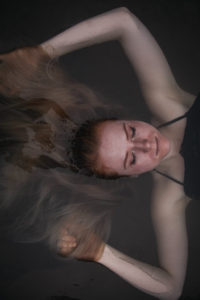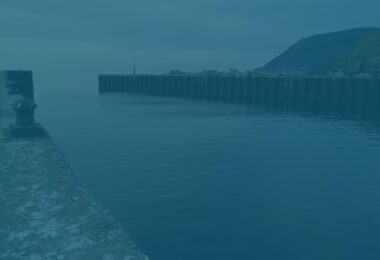We’d hear the thud of water running, then: silence. No matter how we might knock on that door, no matter how we might whine, Mom wouldn’t emerge till she was good and ready. When she finally did, she’d be all smiles—wrapped in her threadbare emerald green housecoat, with a towel atop her head and cheeks bright as apples.
There is a saying in Icelandic, Að leggja höfuðið í bleyti, which translates roughly to “Go lay your head in water.” While it seems to echo the Yiddish insult “Go soak your head,” it couldn’t be more different. Instead, it’s an invitation for self-inquiry: Why don’t you take a breath? Maybe slow down for a minute? Clarity comes after a good long soak, or (metaphorically) just a careful pause. In a country that bubbles and burbles with hot pots, it’s easy to imagine how this phrase arose.
Decades before I’d travel to the Land of Fire and Ice, I began to discover the transformative power of a good bath, or just a quick breather, in a humbler location—my childhood home. Every night, my mother made it a point to “lay her head in water.” After returning from her schoolteacher job, she’d fix us dinner, endure our family drama du jour, and then prepare the bath. Our single bathroom was tiny and narrow and ill-papered in iridescent wallpaper, with patchy linoleum floors and rust biting away at the porcelain tub. No matter. It was Mom’s haven. When she closed and locked (locked!) the bathroom door, she was gone. We’d hear the thud of water running, then: silence. No matter how we might knock on that door, no matter how we might whine, Mom wouldn’t emerge till she was good and ready. When she finally did, she’d be all smiles—wrapped in her threadbare emerald green housecoat, with a towel atop her head and cheeks bright as apples.
It would be decades before I understood how much effort it took for my mother to carve out that respite from our daily chaos. R&R didn’t just happen—apparently, it was an art. How could I hope to learn it, to create peace anywhere, with or without an actual oasis?
My first experience taking the waters in any intentional way was in my early twenties. I was living and teaching at an unconventional boarding school in the Blue Ridge Mountains. It was a damn hard year, partly because it was my first “real” job, and partly because of the unusually isolated location. (Dry county, anyone?) My fellow teachers had, in a fit of genius, sawed apart an enormous propane tank to use as a hot tub. Raising it on stilts, they left room for a wood fire beneath. The tub was accessible from the second story of a ramshackle staff retreat house we called “The Pleasure Palace.” To take a dip, we’d step out a window onto a slippery tin roof, then into the tub. It was a pleasure indeed—Deliverance meets Club Med. An ice-cold creek ran below, where we’d pause for the occasional dip, romping bare-skinned through the woods. We’d soak as snow fell, in full view of Black Mountain.
 When the weight of guiding wayward young lives fell heavily on my shoulders, I retreated to the Pleasure Palace. When my grandfather died, I built a fire there and hid for three days. And when I made the difficult decision to leave that job, I was aided by a few good soaks. I’d carry forward with next-level resourcefulness.
When the weight of guiding wayward young lives fell heavily on my shoulders, I retreated to the Pleasure Palace. When my grandfather died, I built a fire there and hid for three days. And when I made the difficult decision to leave that job, I was aided by a few good soaks. I’d carry forward with next-level resourcefulness.
I soon ventured farther from my home state, seeking the waters and more. Somewhere out in the vast wide world was a better place, and I was going to find it. This quest, as it turned out, could itself produce anxiety. On a solo road trip through the Jemez Mountains of New Mexico, the notion led me astray. One of the mountain towns had a perfectly lovely bathhouse—but somehow, I decided it wouldn’t suffice. So I drove into the yon and bushwhacked towards the place where I’d heard there was a more natural spring. I circled through the same ponderosa stand for three hours, rationing water and shivering while the sun sank low and the temperature dropped. I found no water in the desert that day, just primal fear. My pursuit of peace had become a frantic one.
Later, living in San Francisco—and yes, still seeking that elusive better place—taking the waters became a vital part of my routine. For someone who’d spent most her life in a small town, even the mellow City by the Bay seemed frenetic. Thankfully, at my bus stop was a Japanese-style bathhouse, where I’d duck in to get respite from the noise and fog. In the locker rooms hung a sign commanding quiet, and a bell to ring for silence. Clear instructions lay out an order of operations: shower, dry sauna, wet sauna, hot tub, cold plunge, more hot tub. This was bathing as s ritual, presented in a way that was downright sacred. In a time of great transition—including marriage and several job changes–regular visits to the baths gave me structure.
By the time I reached the Baltics, I was in my early thirties, and transition had begun to seem normal. Then, on the brink of divorce, I was embracing change, even enjoying it. When unexpectedly stuck in Helsinki, I became intent on saving money for the next chapter of my travels. The cheapest way I could imagine passing the time, particularly on icy spring days, was to loiter at the swimming hall. For nearly a week, at twelve dollars a day, I retreated from the cold and mingled with naked Finns. In contrast to the Japanese-style baths of San Francisco, the pool echoed with shouts and laughs, and the saunas were full of boisterous conversation. I wound up meeting new friends who later took me out for the requisite vodka and reindeer. Here, R&R might be sacred—but it need not be stuffy.
All of these lessons later converged in Iceland, where I spent a month at a writing residency and visiting Icelandic friends. I skipped the Blue Lagoon, seeking out hidden corners of the country and hike-in springs. At the steamy shores of a geothermal lake, my friends I jumped in: me in a sports bra, my local friend in lace panties, and her boyfriend in Elmo underwear. At the shores, a flock of tourists parked their hulking bus and got out to gawk and snap photos. We grinned and splashed, knowing we’d done it just right.
There are baths all over the world that I’ve yet to visit, but this I know: The joy is not just in the bliss of soaking or finding peace, but in knowing you can do it at any time. You can, in fact, “lay your head in water” whether or not there is any water at all.
It’s like always being able to find a fashionable treasure at the flea market. It takes a particular spirit of discovery. My friend Kate has had this knack since we were kids. To her, everything, everywhere, is style waiting to happen. To me, everything, everywhere, is hedonism waiting to happen. Both can be had for a bargain.
At home in Sonoma, we endured years of drought before wildfires burned two of the nearby hot springs to the ground. While I’m surrounded by luxury spas built on natural springs, most are cost prohibitive. That being said, I’ve got the place staked out. I know when and where to get the neighbors-only spa specials. I know the sweetest swimming hole, complete with waterfall (although yeah, I trespass to get there). And after years of transitional living situations, I finally have a bathtub again. It’s small for my six-foot frame, but when I take a deep breath, kick back, and lay my head in water, I am at peace.










No comments